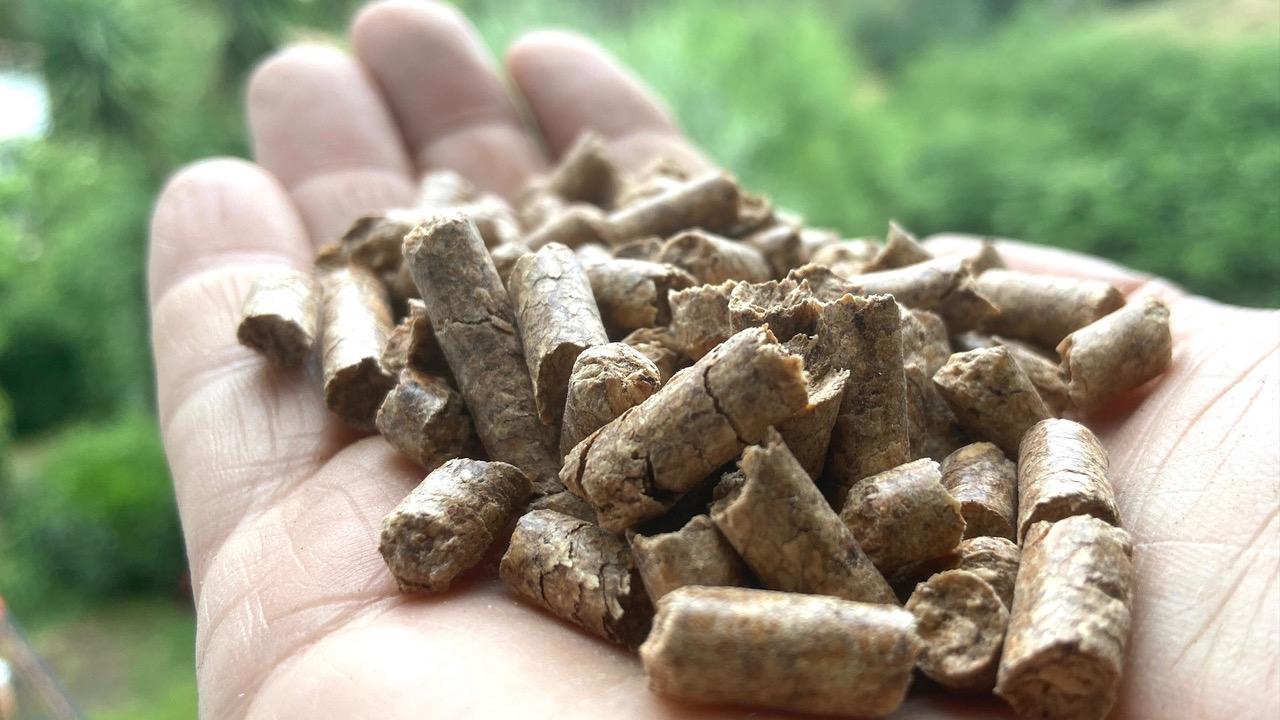From airplanes to energy here on the ground, there’s an alternative to coal that’s grown in recent years: biomass. That is, plant and wood residue burned for energy.
The most successful — and controversial — of such fuel is the tiny wood pellet. In Europe, pellets fire power plants and home furnaces in what’s become a multibillion-dollar-a-year industry. It’s expanded because the European Union labels pellets as renewable — a label that environmentalists say is misguided.
Related: Europe’s new liquified gas infrastructure puts climate targets in question
Complaints are loudest from the Baltic states, where pellet makers are felling old-growth forests to feed the demand.
Siim Kuresoo works for a nongovernmental organization called the Estonian Fund for Nature. He describes Estonia’s old-growth forests as magical and a haven for biodiversity.
“You have young trees, old trees really huge in size, compared to managed forests. And lots of bird songs, especially this time of year.”
“You have young trees, old trees really huge in size, compared to managed forests,” he said. “And lots of bird songs, especially this time of year.”
Estonia’s woodlands are sometimes filled with people, drawn there by ancient pagan beliefs in the animistic nature of the forest. On the autumnal equinox, for example, groups gather to leave offerings around fires and to connect with what they believe to be a higher force.
But the sacred sites for these rituals, and the biodiversity found in Baltic forests, are disappearing as the trees come down.
For over a decade, pellet makers have been cashing in on a lucrative, subsidized, European market for biofuel — felling forests and grinding the trees to dust. The clients are mainly giant power plants. The US is the world’s largest pellets producer. But in Europe, Estonia and its neighbor, Latvia, are the pellet kings.
Related: EU proposes oil ban after bloc’s largest economy drops opposition
In 2020, UK power-giant Drax burned some 85,000 tons of Estonian pellets. Will Gardiner, head of operations for Drax, speaking this year to the UK’s Channel 4, said that they adhere to sustainability guidelines “where the forests are managed in such a way that there’s no damage to biodiversity.”
Drax is one of more than a dozen large power suppliers in Europe that has switched to pellets over the last several years. The industry has expanded from next to nothing after starting in 2009, when the EU classified biomass as renewable. The idea was that residuals, like sawdust or plant cuttings, could be burned for energy. But the EU didn’t differentiate between that waste and living trees themselves. It inadvertently set off a logging and pellet-making boom.
Using pellets instead of coal has allowed power suppliers to collect renewable energy subsidies from Brussels. The industry says that wood is renewable because trees grow back. But the problem, Kuresoo said, is that when you cut down a 100-year-old tree, “It contains carbon from the last 100 years.”
And when you burn the wood, all that carbon goes back into the atmosphere at once, at a time when scientists say it’s critical to reverse emissions.
“The problem with this is that the trees won’t grow back as fast as we need them to grow back,” Kuresoo said.
Related: As Germany reckons with Russian energy, this village is caught in the crossroads
The pellet industry points out that it is reforesting. But usually, it’s done plantation-style, with single species of trees evenly dispersed. So, even if forests do eventually grow back, the habitat won’t be the same.
Nils Torvalds is in charge of setting Europe’s renewable energy policies.
His office did not respond to an interview request, but in January, he told European biomass leaders that, while preserving biodiversity is important, pellets do have their place in the transition to clean energy — even if there are trade-offs.
“That’s part of development,” he said. “Even if biodiversity is at risk, well, life is always risky business. And that goes for all of us.”
But now, after more than a decade of enjoying the “renewable” label, biomass is losing political support in Europe.
Dutch member of parliament, Rob Rooken, spoke at a biomass protest in November. He said that burning wood to generate energy was a ridiculous idea.
“At the moment, more than 50% of all wood being cut in Europe is being burned. It’s a scam. We should stop with biomass. It’s that easy.”
“At the moment, more than 50% of all wood being cut in Europe is being burned,” he said. “It’s a scam. We should stop with biomass. It’s that easy.”
Related: Can heat pumps help bring peace to Ukraine?
But it may not be as easy as he’s implied. The European Parliament’s environment committee did vote this month to scrap the renewables designation for biomass. But the entire parliament and every EU member state must ratify the change for it to become law.
If that happens, instead of being subsidized, pellets could face an emissions tax, making them more expensive. Ecologists hope that that will lower demand, reducing deforestation in the Baltic states and elsewhere.
